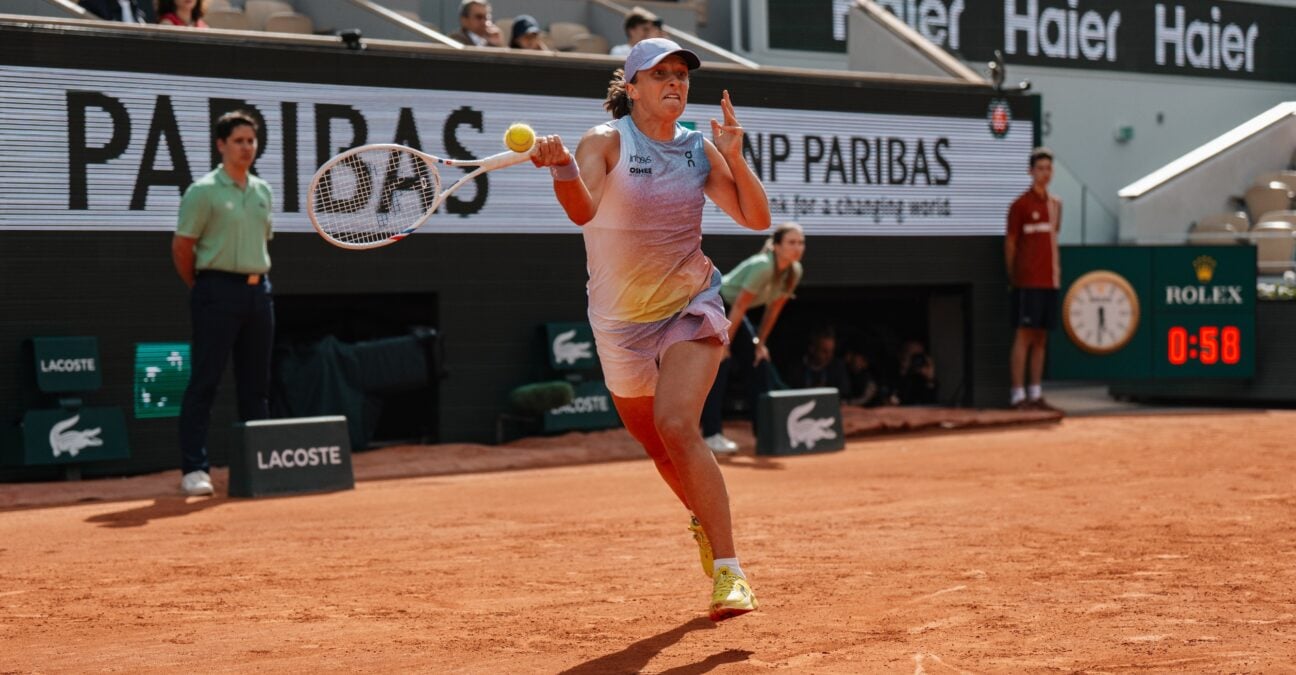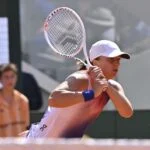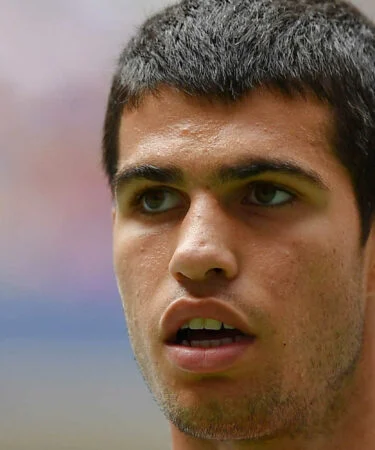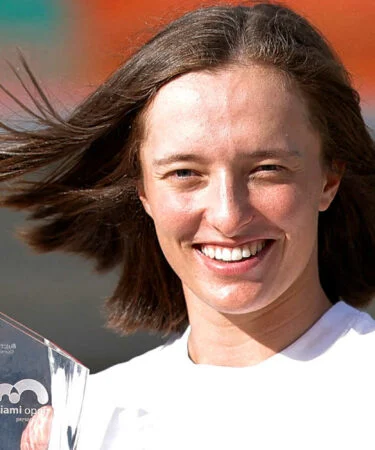The curious case of Iga Swiatek’s vanishing drop shot
The four-time champion says she’s working on using the drop shot more but in her three matches at Roland-Garros this year, it has been conspicuous by its absence
 Julian Nouet/Tennis Majors
Julian Nouet/Tennis Majors
When a fresh-faced Iga Swiatek danced her way to her first Grand Slam title at Roland-Garros in 2020, the Pole’s victory was marked by her the wide variety of her game; a good serve, viciously-spun forehand, rock-solid two-handed backhand and, believe it or not, her drop shot.
The then-19-year-old used the drop shot in all seven of her matches, several times. According to Tennis Abstract, which charts all aspects of match statistics, the drop shot was a major part of the Pole’s game as she began her march to the top of the game.
Measured as the percentage that a player hits a drop shot per groundstroke, from the baseline, Swiatek reached 5.2 percent in her first-round win over Marketa Vondrousova and plenty more in the year after, when she used the drop shot in all but one of her matches, interestingly, her quarter-final defeat by Maria Sakkari.
In 2022, the drop shot was still a part of her armoury, used in two of her seven matches. But in the past few years, including this year, it has largely vanished. In her three matches to date at Roland-Garros this year, she has not hit a single winning drop shot (the only way it’s measured at the tournament). In 2023, she hit the drop shot in just one match; in 2024, she didn’t use it at all.
There are a couple of ways to look at this; it shows that Swiatek can win Roland-Garros, as she has done four times, without using one of the biggest weapons on clay; or it shows she’s focusing so hard on regaining her form after a lean spell that she’s keeping things simple and relying on her groundstrokes to get the job done.
Swiatek talked in Rome about using drop shot more
But there’s no question that the drop shot would be a good addition to Swiatek’s game and it seems she knows it, at least going by what she said in Rome earlier this month, when chatting to reporters after an early win.
“I played one drop shot, I mean two drop shots, but one drop shot which was good,” she said, as quoted by thetennisgazette.com. “So I tried some new stuff and for sure it was a great match and a great start of the tournament.
“Honestly, I forgot about it but my coach (Wim Fissette) reminded me from the box so this was helpful. I am the kind of player who is in the zone and wants to continue what I have been doing but I also want to become more creative, so he reminded me a little bit and I tried and I am happy that I did.
“I guess it depends on the court and the level of confidence. Also if you feel in your mind that you are going to miss these shots you don’t play often, you are just going to let it go. So today I felt it was a good day for that so I just did it.”
Alcaraz and Sabalenka good examples
Unless you feel comfortable with your game, though, it’s tough to change your playing style and just throw in a few drop shots. Court position is crucial, and she may not get many opportunities to use it against Elena Rybakina, her opponent in the fourth round. If she can, though, they would probably be helpful.
Swiatek has talked about being inspired by Carlos Alcaraz, one of the best exponents of the drop shot, but might also take a look at the current world No 1, Aryna Sabalenka, who has added the drop shot to her game with great effect in recent years.
“It’s a learning process and I’m not afraid to make mistakes,” Sabalenka told reporters in Madrid last month. “I think with time I will learn how to make the right decisions. It’s going to benefit my game. I think on the clay court, it’s like a good practice with those shots. You just have to make sure you pick the right one at the right moment.”
Sabalenka didn’t hit any drop shot winners in her first match but then hit seven in her second-round win here and two in her third-round victory. “Somewhere like Rome, for example and here, it really brings a lot of benefits to the game,” she said.
















